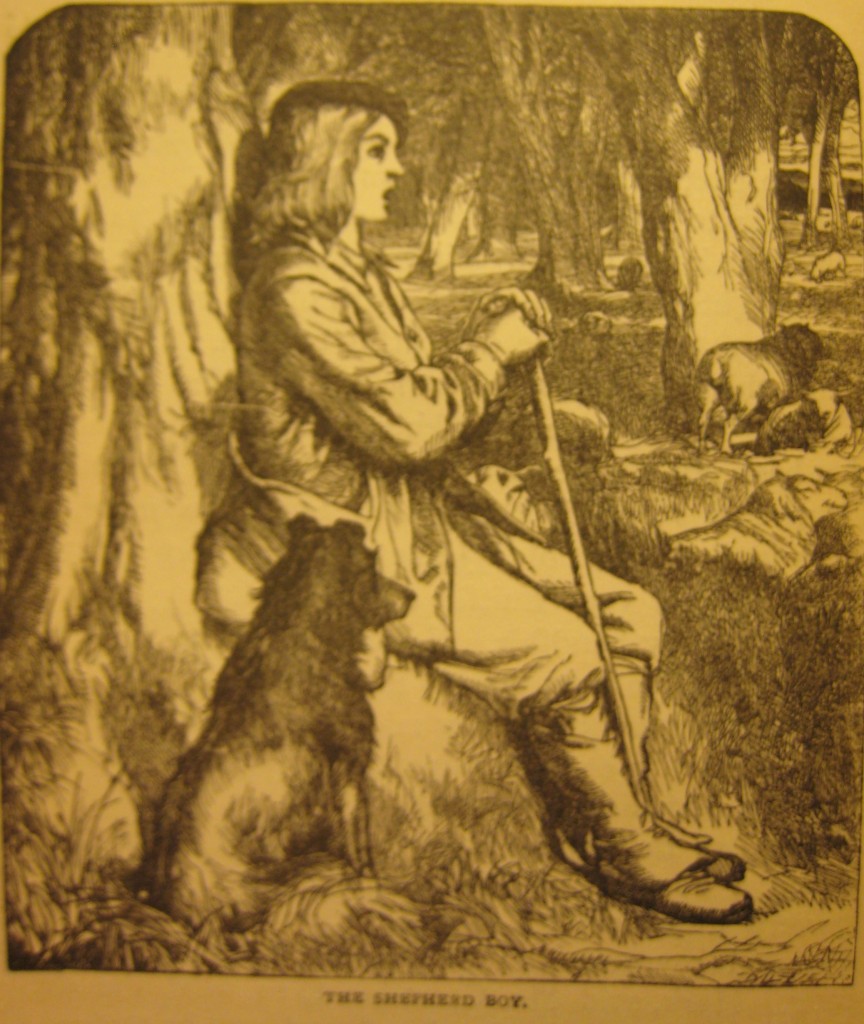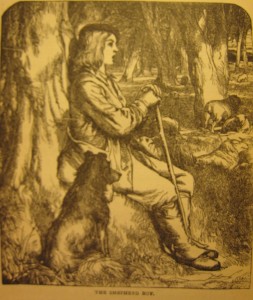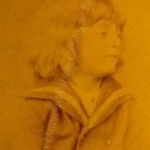- 1871 – At the age of six, Dawson-Watson was living in the village of Tynemouth at 5 Bath Terrace.¹ Tynemouth is located on the coast of Northumberland, close to Newcastle and Cullercoats. A wind-swept port town, Cullercoats (Cullercoats History page) was a popular gathering place for many artists of the late nineteenth century, including the American painter, Winslow Homer.
Dawson-Watson’s father moved his family to Tynemouth at the request of the editor of The Graphic to make marine illustrations. During this time, John Dawson Watson was doing double-page illustrations for the magazine. One illustration in particular was of a local sailor, Captain Joe Cook, throwing a hard-line to a ship on the rocks. The hard-line would have been an attempt by Captain Cook to save the crew of the ship. On two occasions, Dawson-Watson’s father took him down to the edge of the cliffs to see the shipwrecks. The sheer cliffs on that part of the coast are about eighty feet high. During bad storms, the ships were often driven into the jagged rocks below. Later in life Dawson-Watson recalled, “The two wreckings that I saw at that time made such an indelible impression on my mind that there are times even now in some quiet hour when they appear before me just as clear in every detail as at the time I saw them.” One of these wrecks was portrayed by John Dawson Watson in his oil, Saved (1871; unlocated).
After Tynemouth, John Dawson Watson moved the family back to Milford.
Dawson-Watson, ca. 1871
(Dawson Dawson-Watson family archives)
- 1872 – From 1872 to 1879, Dawson-Watson attended Diocesan Grammar School in Southsea in Hampshire. Southsea is on the English Channel and faces the Isle of Wight. During his school years, he consistently excelled in two subjects, divinity and drawing. One year he was awarded a silver medal for high marks. At the age of fourteen he attended a Junior Cambridge examination in drawing. His subject matter was a bunch of grapes. He failed to complete the drawing within the allotted time not realizing that he would be judged on the completion of the drawing rather than the merits of the drawing. At that young age he thought it was a “hot” joke!
In 1872, John Dawson Watson illustrated Robinson Crusoe and Pilgrim’s Progress, published by George Routledge and Sons and engraved by The Brothers Dalziel. Dawson Dawson-Watson was the model for the shepherd boy minding his flock in Pilgrim’s Progress. Dawson-Watson recalled his father illustrating these books, every detail drawn from life with the exception of the imaginary ones in Pilgrim’s Progress. Each volume included over 200 woodblocks.
The Shepherd Boy. John Dawson Watson used Dawson-Watson as a model for the illustration of a shepherd boy in Pilgrim’s Progress.
- 1874-75 – The family returned to London, 22 St. Edmunds Terrace in St. John’s Wood, N.W., on the edge of Primrose Hill. Within a few blocks of their address lived the painters Ford Madox Brown and Lawrence Alma-Tadema.
- 1876 – In 1876 Dawson-Watson had the opportunity to meet Charles Campbell of the interior decorating firm Campbell and Smith. John Dawson Watson had hired the firm to redecorate their new home. Dawson-Watson later recalled that the firm was a pioneer “aesthetic” in interior decoration.
- 1878-79 – Dawson-Watson completed his education at the Diocesan Grammar School and moved with his family to a much larger home built by Edwin Long, R.A.
1. 1871 England Census, Ancestry.com (online database), accessed August 9, 2014.
2. “Glory of the Morning,” Pioneer Magazine 7 (April 1927): 5, 11-[12].
3. Dawson Dawson-Watson, “Things Remembered,” manuscript memoir, Dawson-Watson family archives.





